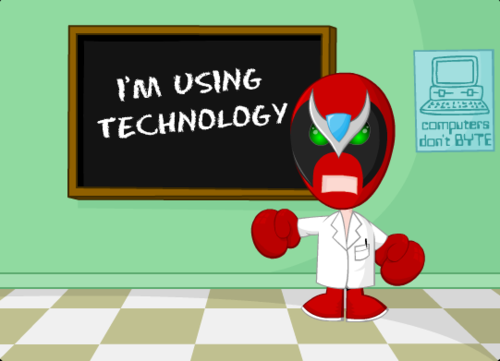Active Learning
37 Active Learning in Blended & Online Classes
 Observe & Consider
Observe & Consider
In part one of this week’s two-part podcast, Steel Wagstaff from L&S Learning Support Services facilitates a conversation with Greg Downey, a professor in the School of Journalism and Mass Communication and School of Library and Information Studies, and Brad Hughes, the longtime director of UW-Madison’s outstanding Writing Center. In this segment of their conversation, they talk about how their experiences with blended and online courses have impacted their views of student engagement, the importance of active learning, and the power of connection.
Your browser does not support HTML5 audio. If you’d like to listen to the file, use the download link below.
Download the .mp3 (right-click and ‘save link as’)
The Challenge Posed by Blended and Online Classes

If you thought that large lecture classes were impersonal and rife with passivity, what does that mean about online-only courses, courses in which you can’t even see the bored, sleep-deprived students, classes in which you have far fewer non-verbal or visual cues to increase your awareness of where students are flagging or confused, and whose asynchronous nature makes it difficult to get an accurate reading of the overall class’ pulse and progress at a given moment? Are students struggling to understand the content you posted two weeks ago, or have they not yet got around to reading it? It can sometimes be difficult to know.
Assessing and diagnosing barriers to student learning is only one part of the challenge posed by online instruction. Some online courses are criticized by instructional designers for their occasional tendency to maximize some of the worst elements of higher education (like large class sizes and impersonal instructor-student and student-student interactions). They’re popular among administrators who want to decrease student time to graduation, offer consumers greater convenience and flexibility, and grow tuition revenue while decreasing labor costs, but there are several instructors and students who have complained that without proper care and planning, online instruction can resemble the banking or transmission model on steroids, relying too-frequently on less-engaging models of content delivery, skill development, and evaluation.
Making Online Courses Interactive and Engaging

Before we begin exploring specific practical ideas for active learning in a blended or wholly online learning environment, we want to stress that we believe that online learning can be profoundly active. As we noted in our previous module on blended learning, online resources offer several advantages to both instructors and learners when they’re used intelligently. For these advantages to be maximized, however, we believe that the following considerations should be in place:
- Alignment: Most effective courses, whether blended, online, or entirely face to face, are intentionally and carefully aligned, meaning that each of the course’s most important components (like instructional materials, learning activities, student assignments, assessment, course tools or media) work together to ensure that students achieve desired learning outcomes. Consider regularly sharing your daily and weekly objectives upfront with all class participants, and ask students to help you identify areas or parts of the course that feel disconnected or poorly aligned.
- Clear instructions & explicit expectations: In many blended or online environments, students don’t have all of the opportunities for informal interaction, direct modeling, or question asking that can help establish norms and practices in face to face classes. When teaching a blended or online course, it’s especially important that instructors clearly explain their expectations for students, and provide simple, direct models for them to follow as they begin to develop the habits and practices they’ll need to master to succeed in the course. In the podcast, Greg and Brad both note the importance of helping students understand the course’s unique communication situations early on, which may require instructors to be more explicit about their instructions and expectations than they might otherwise be. It’s also helpful to establish working routines and regular deadlines in courses without much face to face time so that can begin establishing patterns or schedules of engagement with course materials, interacting with their peers, and completing required work.
- Offer multiple invitations/opportunities for engagement: The most effective blended and online courses offer learners with several points of entry and methods of engaging and interacting with its various components (whether it be instructional material, the instructor, or other learners). Consider developing several different types of activities and assignments, and look for ways to encourage (or require) students to make meaningful connections between their lives and interests and course material. When developing a class activity for a blended or online course, take special care to build in opportunities for reflection on the activity’s purpose and the learning objectives it supported.
In addition to these key features, there are a number of suggestions in the literature for improving the quality of active learning in blended and online courses. While we obviously can’t share all of them with you, here are two helpful sources we do recommend:
- Quality Matters, a faculty-centered peer-review process developed by the University of Maryland and in use around the country, offers a set of standards and manages a peer-review system that helps subscribing colleges and universities (and very recently, individual instructors!) improve the quality of their face-to-face and online courses. They’ve developed and made public a standards rubric for instructors and course designers to use in evaluating the quality of their course.
- Take a look at Theory and Practice of Online Learning, an outstanding collection of materials on online teaching edited by Terry Anderson, a distance education professor at Canada’s Athabasca University.
Media Attributions
- 3-modesB

